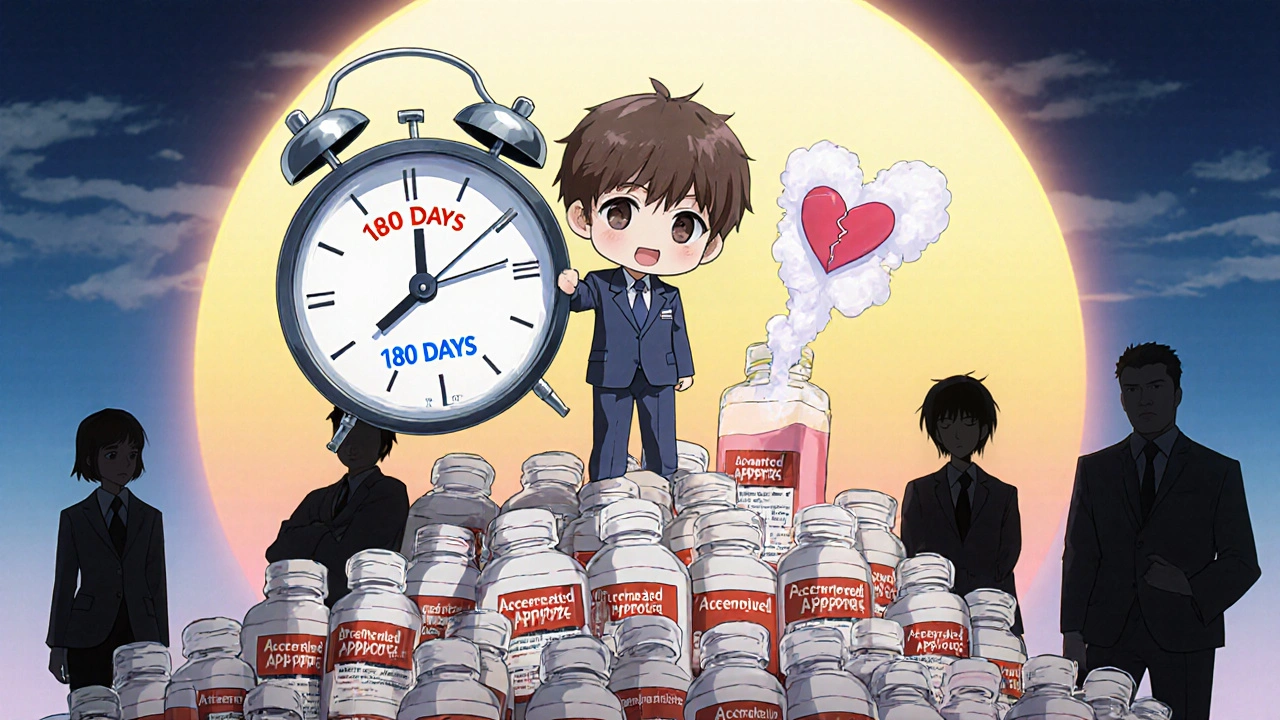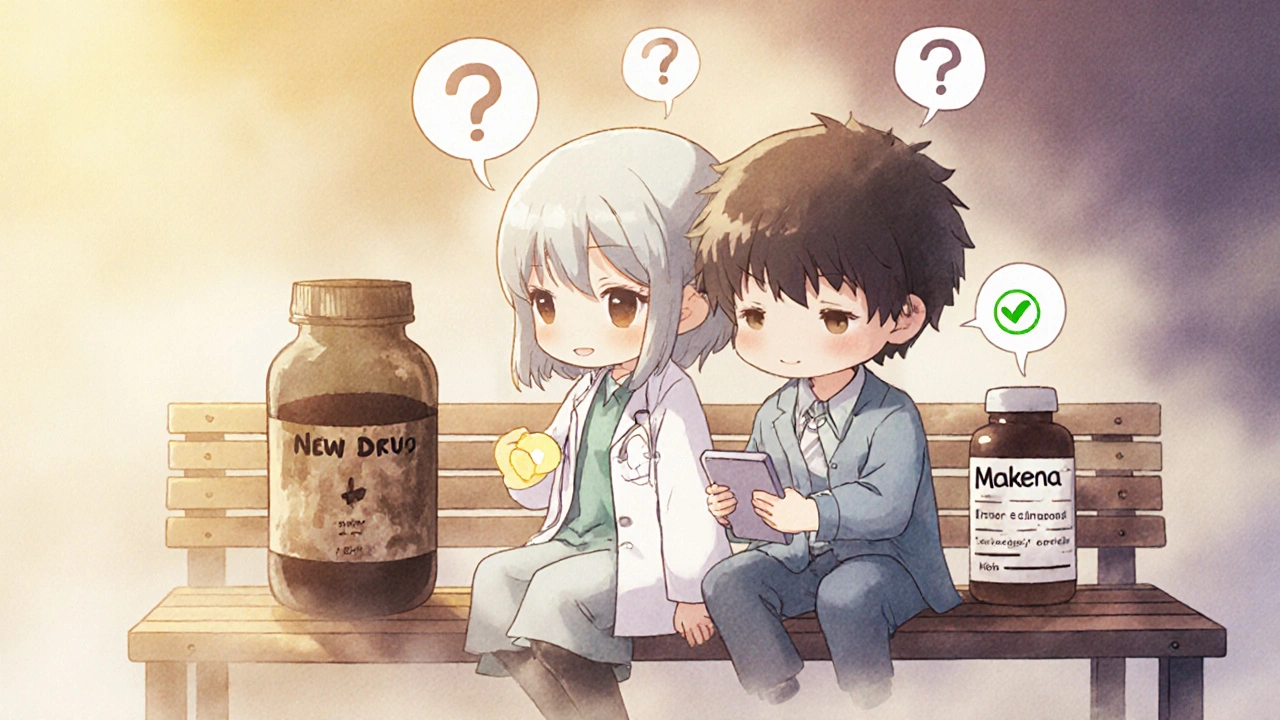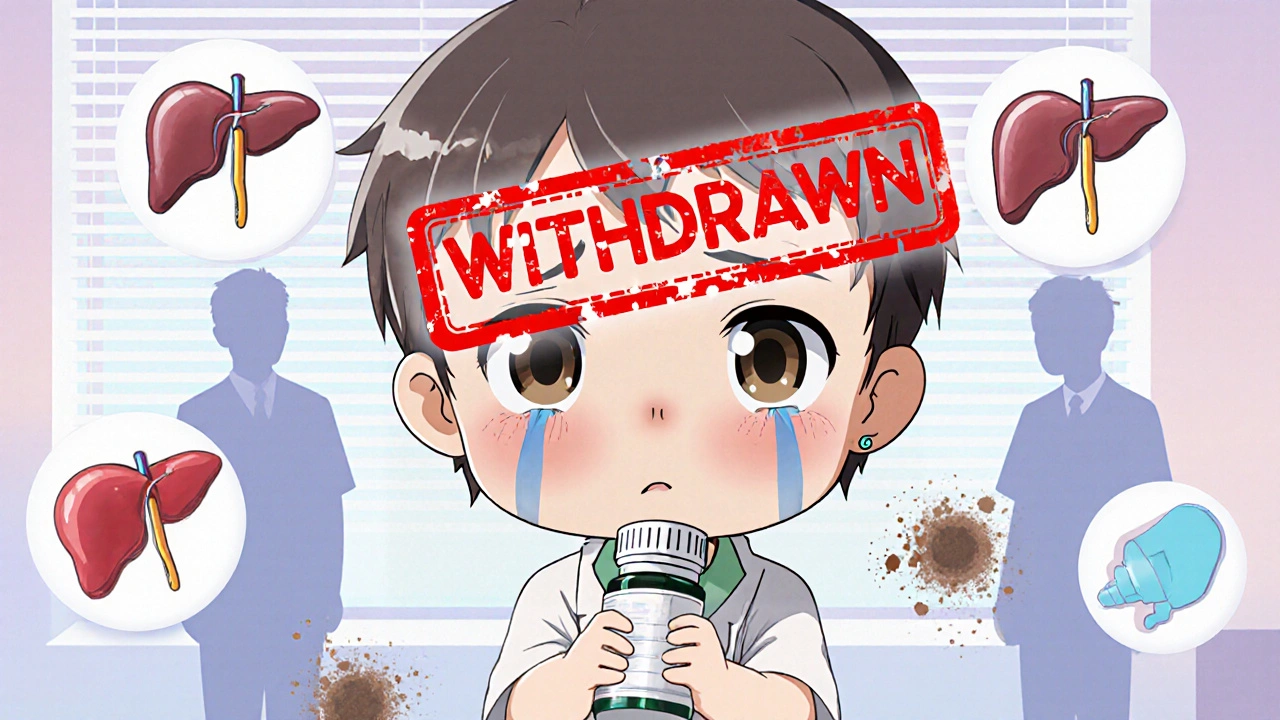Drug Withdrawal Timeline Calculator
The FDA now has a clearer timeline for drug withdrawals. Based on your medication's approval date and pathway, see when it might be removed from the market.
Calculate Withdrawal Timeline
Estimated Withdrawal Timeline
Based on FDA data: Average 46 months for pre-2023 accelerated approval drugs. Post-2023 target: Under 12 months. This is an estimate only.
When a Drug Disappears from the Shelf
Imagine you’ve been taking a medication for months-maybe even years-because your doctor said it was safe, effective, and the best option. Then one day, you hear it’s been pulled from the market. No warning. No notice. Just gone. That’s not a hypothetical. It’s happened to thousands of patients, especially in cancer care. Between 2010 and 2020, about 12.7% of drugs approved under the FDA’s accelerated pathway were eventually withdrawn. That’s nearly one in eight. And many patients kept taking them for years after evidence showed they didn’t work.
Why Do Drugs Get Withdrawn?
Drugs don’t vanish because a company ran out of stock or had a bad batch. Withdrawals happen because the medicine fails to meet the basic promise of modern medicine: it does more good than harm. The FDA removes drugs when new data proves they’re either unsafe, ineffective, or both. About 60% of withdrawals are due to safety risks-like liver damage, heart problems, or deadly side effects. The rest are because the drug simply doesn’t work. In oncology, where many drugs get approved based on early signs of tumor shrinkage, this is especially common. A drug might shrink tumors in a small group of patients, but later trials show it doesn’t help people live longer. That’s not a win. It’s a trap.
The Accelerated Approval Loophole
The FDA has a fast-track system called accelerated approval. It lets drugs hit the market faster, especially for life-threatening illnesses like cancer or rare diseases. The catch? The company has to prove the drug works in a later, bigger study. But for decades, that follow-up study was treated like a suggestion, not a deadline. The FDA approved drugs like Makena (for preventing preterm birth) in 2011 based on weak data. It wasn’t until 2020 that the confirmatory trial showed it didn’t work. The FDA didn’t pull it until 2022. That’s 11 years of patients getting a drug that offered no benefit. During that time, an estimated 150,000 women received it.
This wasn’t an isolated case. A 2023 study found that for drugs approved under accelerated pathways, the FDA took an average of 46 months to withdraw them after evidence of failure emerged. That’s almost four years. Meanwhile, patients kept getting prescriptions. In one type of lung cancer, 41% of eligible patients were still getting drugs later pulled for ineffectiveness.
The 2023 Rule Change That Actually Mattered
In December 2023, Congress passed the Consolidated Appropriations Act-and for the first time in decades, the FDA got real power to act fast. The new law gives the agency a clear, structured path to remove drugs that fail their post-approval studies. Now, if a company doesn’t do its required follow-up study on time, or if independent data proves the drug doesn’t work, the FDA can move quickly. The agency must:
- Notify the company within 30 days
- Offer a meeting with FDA leadership within 60 days
- Issue a final decision within 180 days
This is a massive shift. Before, withdrawals could drag on for years with no timeline. Now, the FDA has a clock. And they’re using it. In August 2023, they issued their first expedited withdrawal notice for an ALS drug. The goal? Cut the average withdrawal time from 46 months to under 12.

What Happens to Patients When a Drug Is Pulled?
It’s messy. Oncologists say it takes an average of 72 hours to switch a patient to a new treatment after a drug is withdrawn. That’s not much time. Patients often find out through a pharmacist or a news alert, not their doctor. A 2023 FDA audit found only 42% of withdrawal notices included clear guidance for doctors on how to transition patients. That’s unacceptable. Many patients feel betrayed. One metastatic breast cancer patient wrote on a patient forum: “I was on [withdrawn drug] for 18 months. My oncologist said it was standard of care. Now we know it didn’t help.”
Doctors aren’t always to blame. Many didn’t know the drug was under review. Pharmacists struggled too-a 2022 survey showed 63% had trouble interpreting the FDA’s Orange Book listings, which track which drugs are approved and which are withdrawn. The system was designed for regulators, not frontline providers.
How the U.S. Compares to the Rest of the World
Europe and Canada have long used “conditional approval”-where a drug is allowed on the market only if the company agrees to specific follow-up studies with clear deadlines and consequences. If the company fails, the drug is pulled fast. The U.S. didn’t have that structure. Instead, it relied on voluntary compliance and slow reviews. The 2023 law finally brought U.S. rules closer to international standards. Now, the FDA can demand proof of benefit-or remove the drug. No more waiting for a company to get around to it.
Who’s Really at Risk?
It’s not just cancer patients. People with rare diseases, chronic conditions, and even pregnant women have been caught in the crosshairs. Drugs approved for Alzheimer’s, autoimmune disorders, and heart failure have all been pulled after years on the market. The problem isn’t the approval system-it’s the lack of consequences when companies don’t deliver on their promises. The FDA used to treat drug approvals like a handshake. Now, it’s becoming a contract.

What You Should Do If You’re on a High-Risk Drug
If you’re taking a drug approved under accelerated approval-especially for cancer, ALS, or a rare disease-ask your doctor these questions:
- Was this drug approved under the accelerated pathway?
- Has the company completed the required confirmatory study?
- Is there any new data suggesting it doesn’t work?
- What are the alternatives if this drug gets pulled?
Don’t assume your doctor knows. A 2022 study found 30% of patients on accelerated approval oncology drugs were still on them after the confirmatory trial failed. Knowledge gaps are real. And you have the right to know.
The Bigger Picture: Innovation vs. Safety
Some drug companies argue that faster withdrawals could scare off innovation. Why invest in a risky new cancer drug if it could be pulled after five years? That’s a fair concern. But the real issue isn’t withdrawal-it’s the delay. The system should reward breakthroughs, not reward waiting. The 2023 reforms don’t punish innovation. They punish dishonesty. If a drug works, it will survive the follow-up. If it doesn’t, patients shouldn’t pay the price with their health.
What’s Next?
The FDA is now testing real-world data from sources like Flatiron Health to monitor drug effectiveness after approval. Instead of waiting years for a formal study, they’ll look at actual patient outcomes. This could cut withdrawal times even further. Analysts predict a 25% increase in drug withdrawals between 2023 and 2027. That sounds scary-but it’s a sign the system is finally working. The goal isn’t to pull more drugs. It’s to stop letting patients take drugs that don’t help.
Final Thought
Medications aren’t like smartphones. You don’t upgrade them every year. When you take a pill every day, you’re trusting the system to protect you. For too long, that trust was broken. The 2023 reforms are the first real step toward fixing it. It’s not perfect. But for the first time in decades, the FDA has the tools-and the mandate-to act before more people are harmed.

12 Comments
Beth Banham
I just read this and felt my stomach drop. I’ve been on a drug for MS that got approved under accelerated pathway. Never even thought to ask if the follow-up study was done. Scary how much we just trust the system without digging.
Jennifer Bedrosian
I’m so mad right now my hands are shaking. My mom was on one of these drugs for 3 years. They told her it was ‘the best option’ and then POOF-gone. No warning. No apology. Just ‘sorry we messed up.’
Jim Oliver
Of course the FDA waited 46 months. Because bureaucracy is just a really slow, expensive way to pretend we care. The real crime? Patients dying while regulators sip coffee and wait for paperwork.
Brierly Davis
This is actually kind of hopeful though? The 2023 rule change feels like the first real win in years. Maybe the system can learn. Maybe we can stop letting companies get away with this. 🤞
Rashmi Mohapatra
USA always late to the party. Europe pulled these drugs in 2 years max. Why you guys need 11 years to say ‘oops’? People die while you argue about paperwork.
Amber O'Sullivan
The fact that 63% of pharmacists can’t read the Orange Book is criminal and not surprising
William Priest
I mean if you’re dumb enough to take a drug approved under accelerated pathway without checking the post-trial status then you deserve what you get. Stop being a victim and read a damn study.
Alyssa Fisher
It’s not about blame. It’s about systemic failure. We’ve turned medical approval into a corporate sprint where the finish line is profit, not patient survival. The accelerated pathway wasn’t the problem-it was the lack of teeth. Now they’ve got teeth. That’s progress. But we still treat patients like afterthoughts. We need mandatory transparency portals-real-time dashboards showing trial status, withdrawal alerts, and alternatives. Not just for oncology. For every drug. Because if you’re taking something daily, you deserve to know if it’s a lifeline or a lie.
Lashonda Rene
I think people just want to believe there’s a cure out there, you know? Especially when you’re scared. So when your doctor says ‘this is new but promising’ you hold on tight. I get why companies do it too. They’re trying to help people fast. But they’re also trying to make money. And when those two things collide, people get hurt. It’s not all evil corporations-it’s a broken machine. We need better communication, better training for doctors, and honestly? We need to stop treating medicine like a tech startup. You don’t beta test human lives.
Ryan Masuga
I work in a clinic and I’ve seen this firsthand. Patients cry when their drug gets pulled. Not because they’re mad at the FDA-they’re mad because they trusted their doctor. We need a national alert system. Like Amber Alerts but for drug recalls. Texts, emails, app notifications. Something that hits people before they walk into the pharmacy.
Alyssa Salazar
Accelerated approval was never meant to be a loophole-it was a lifeline. But the FDA’s passive-aggressive ‘we’ll get around to it’ approach is pure negligence. The 2023 law isn’t revolutionary-it’s remedial. And yet here we are, acting like it’s a miracle. Meanwhile, the same companies that got away with 11-year delays are already lobbying to weaken the new rules. Don’t celebrate yet. Fight.
Andy Slack
My dad was on a drug pulled in 2021. Switched to a new one. It worked. But the gap? 11 days. He nearly didn’t make it. We need a national registry of patients on accelerated drugs. Automatically flagged. Doctors get alerts. Pharmacies get alerts. Patients get alerts. No more silence.